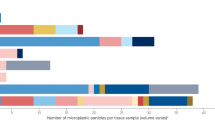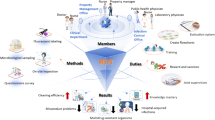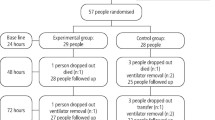Abstract
Patients deserve to be treated in a safe and clean environment with consistent standards of care every time they receive treatment. It is essential that the risk of person-to-person transmission of infections be minimised, yet it is also essential that planetary harm (and therefore public harm) is minimised with respect to resource consumption, air pollution, environmental degradation etc.
In 2013, the Department of Health introduced the Health Technical Memorandum (HTM) 01-05 providing dental practices with advice on patient safety when decontaminating reusable instruments in primary care. This paper provides a commentary on HTM 01-05 and similar decontamination guidance. We believe all decontamination documents needs to reflect the so-called 'triple bottom line' - the finance, social cost and impact on the planet.
The authors provide an environmental commentary on a number of items mentioned in decontamination documents, including autoclaves (including the use of helix tests), disposable paper towels, undertaking hand hygiene, using a log book, plastic bag use, the use of personal protective equipment, remote decontamination units, single use instruments, single use wipes, disinfection chemicals (for example, sodium hypochlorite) thermal disinfection and wrapping of instruments.
It is hoped, in the spirit of the ever-increasing numbers of papers published to highlight how healthcare (and dentistry) could become more sustainable, that these critiques will be taken in the spirit of providing a beginning of further discussion from an environmental perspective.
Key points
-
Decontamination documents, such as HTM 01-05, need a revision to include resource use.
-
Single-use instruments should only be used if they offer significant risk (patient safety/environmental resource use) benefit.
-
Clinicians should follow decontamination guidance but question where appropriate unnecessary resource use.
This is a preview of subscription content, access via your institution
Access options
Subscribe to this journal
Receive 24 print issues and online access
$259.00 per year
only $10.79 per issue
Buy this article
- Purchase on SpringerLink
- Instant access to full article PDF
Prices may be subject to local taxes which are calculated during checkout


Similar content being viewed by others
References
NHS England. (HTM 01-01) Decontamination of surgical instruments. 2021. Available at https://www.england.nhs.uk/publication/decontamination-of-surgical-instruments-htm-01-01/ (accessed October 2021).
Richardson J, Grose J, Manzi S et al. What's in a bin: A case study of dental clinical waste composition and potential greenhouse gas emission savings. Br Dent J 2016; 220: 61-66.
Almutairi W, Saget S, McDonnell J et al. The planetary health effects of COVID-19 in dental care (life cycle assessment approach). Br Dent J 2022; 233: 309-316.
Lenzen M, Malik A, Li M et al. The environmental footprint of health care: a global assessment. Lancet Planet Health 2020; DOI: 10.1016/S2542-5196(20)30121-2.
Duane B, Stancliffe R, Miller F A, Sherman J, Pasdeki-Clewer E. Sustainability in Dentistry: A Multifaceted Approach Needed. J Dent Res 2020; 99: 998-1003.
NHS England. Delivering a net zero NHS. Available at https://www.england.nhs.uk/greenernhs/a-net-zero-nhs/ (accessed July 2022).
The Intergovernmental Panel on Climate Change. Available at https://www.ipcc.ch/ (accessed November 2021).
United Nations. UN Report: Nature's Dangerous Decline 'Unprecedented'; Species Extinction Rates 'Accelerating'. Available at https://www.un.org/sustainabledevelopment/blog/2019/05/nature-decline-unprecedented-report/ (accessed December 2021).
World Wildlife Fund. Water scarcity: Overview. Available at https://www.worldwildlife.org/threats/water-scarcity#:~:text=Billions%20of%20People%20Lack%20Water,may%20be%20facing%20wa (accessed December 2021).
Byrne D, Saget S, Davidson A et al. Comparing the environmental impact of reusable and disposable dental examination kits: a life cycle assessment approach. Br Dent J 2022; 233: 317-325.
Rizan C, Reed M, Bhutta M F. Environmental impact of personal protective equipment distributed for use by health and social care services in England in the first six months of the COVID-19 pandemic. J R Soc Med 2021; 114: 250-263.
Rizan C, Bhutta M F. Environmental impact and life cycle financial cost of hybrid (reusable/single-use) instruments versus single-use equivalents in laparoscopic cholecystectomy. Surg Endosc 2021; 36: 4067-4078.
Canadian Dental Association. Infection Prevention and Control in the Dental Office. 2006. Available at https://www.yumpu.com/en/document/read/11540682/infection-prevention-and-control-in-the-dental-office-saskatchewan- (accessed December 2021).
Dental Council of Ireland. Code of Practice Relating to: Infection Prevention and Control. 2015. Available at http://www.dentalcouncil.ie/files/IPC%20Code%20-%20Final%20-%2020150402.pdf (accessed December 2021).
Dental Council of New Zealand. Infection Prevention and Control Practice Standard. 2015. Available at https://www.dcnz.org.nz/assets/Uploads/Consultations/2015/Infection-prevention-and-control-practice-standard-effective1May16.pdf (accessed December 2021).
Scottish Dental Clinical Effectiveness Programme. Decontamination Into Practice. Available at https://www.sdcep.org.uk/published-guidance/decontamination/ (accessed December 2021).
Centers for Disease Control and Prevention. Summary of Infection Prevention Practices in Dental Settings. Available at https://www.cdc.gov/oralhealth/infectioncontrol/pdf/safe-care2.pdf (accessed December 2021).
Australian Dental Association. Guidelines for Infection Prevention and Control. 2021. Available at https://www.ada.org.au/Dental-Professionals/Publications/Infection-Control/Guidelines-for-Infection-Control/Guidelines-for-Infection-Control-V4.aspx (accessed December 2021).
Ecoinvent. Ecoinvent Database (version 3.7.1). Available at https://ecoinvent.org/the-ecoinvent-database/data-releases/ecoinvent-3-7-1/ (accessed December 2021).
OpenLCA. Available at https://www.openlca.org/ (accessed December 2021).
European Commission. Environmental Footprint and Material Efficiency Support for Product Policy. 2015. Available at http://publications.jrc.ec.europa.eu/repository/bitstream/JRC95187/lb-na-27200-en-n.pdf (accessed December 2021).
McDonnell G, Burke P. Disinfection: is it time to reconsider Spaulding? J Hosp Infect 2011; 78: 163-170.
Rutala W A, Weber D J. How to assess risk of disease transmission to patients when there is a failure to follow recommended disinfection and sterilization guidelines. Infect Control Hosp Epidemiol 2007; 28: 146-155.
Roy K M, Ahmed S, Cameron S O et al. Patient notification exercise following a dentist's admission of the periodic use of unsterilized equipment. J Hosp Infect 2005; 60: 163-168.
Mason B W, Cartwright J, Sandham S, Whiteside C, Salmon R L. A patient notification exercise following infection control failures in a dental surgery. Br Dent J 2008; DOI: 10.1038/sj.bdj.2008.656.
Redd J T, Baumbach J, Kohn W, Nainan O, Khristova M, Williams I. Patient-to-patient transmission of hepatitis B virus associated with oral surgery. J Infect Dis 2007; 195: 1311-1314.
Bradley K, Fox J, Wilson J, Harris T, VanBuskirk K, Schaefli N. Investigation of Healthcare-Associated Hepatitis C Virus Transmission in a Dental Surgical Clinic - Oklahoma, 2013. Presented at Council of State and Territorial Epidemiologists Conference. Pasadena: California, 2013.
European Commission. Life Cycle Assessment using ReCiPe. Available at https://ec.europa.eu/environment/biodiversity/business/assets/pdf/case-studies/Case%20study%2016_ReCiPe%20Hand%20drying%20systems_final.pdf (accessed December 2021).
International Trade Administration. Netherlands - Country Commercial Guide. Available at https://www.trade.gov/country-commercial-guides/netherlands-energy (accessed December 2021).
Pitt S J, Crockett S L, Andreou G M. The contribution of hand drying in prevention of transmission of microorganisms: comparison of the efficacy of three hand drying methods in the removal and distribution of microorganisms. J Infect Prev 2018; 19: 310-317.
Mutters R, Warnes S L. The method used to dry washed hands affects the number and type of transient and residential bacteria remaining on the skin. J Hosp Infect 2019; 101: 408-413.
Reynolds K A, Sexton J D, Norman A, McClelland D J. Comparison of electric hand dryers and paper towels for hand hygiene: a critical review of the literature. J Appl Microbiol 2021; 130: 25-39.
Gendron L M, Trudel L, Moineau S, Duchaine C. Evaluation of bacterial contaminants found on unused paper towels and possible postcontamination after handwashing: a pilot study. Am J Infect Control 2012; DOI: 10.1016/j.ajic.2011.07.007.
Duane B, Pilling J, Saget S, Ashley P, Pinhas A R, Lyne A. Hand hygiene with hand sanitizer versus handwashing. What are the planetary health consequences? Environ Sci Pollut Res Int 2022; 29: 48736-48747.
Heinze J E, Yackovich F. Washing with contaminated bar soap is unlikely to transfer bacteria. Epidemiol Infect 1988; 101: 135-142.
Zapka C A, Campbell E J, Maxwell S L et al. Bacterial hand contamination and transfer after use of contaminated bulk-soap-refillable dispensers. Appl Environ Microbiol 2011; 77: 2898-2904.
Schmidt J, Pizzol M. Critical review of four comparative life cycle assessments of printed and electronic communication. 2014. Available at https://lca-net.com/files/Review_of_four_LCAs_on_printed_versus_electronic_media.pdf (accessed December 2021).
Suksuwan A, Matossian A, Zhou Y, Chacko P, Skerlos S. Environmental LCA on three note-taking devices. Procedia CIRP 2020; 90: 310-315.
Time for Change. Plastic bags and plastic bottles - CO2 emissions during their lifetime. Available at https://timeforchange.org/plastic-bags-and-plastic-bottles-co2-emissions-during-their-lifetime/ (accessed December 2021).
Sciencing. What Is the Carbon Footprint of a Plastic Bottle? Available at https://sciencing.com/carbon-footprint-plastic-bottle-12307187.html (accessed December 2021).
Grimmond T. Using reusable containers for hospital waste: is there an infection risk? S A J Epidemiol Infect 2013; 28: 197-201.
Grimmond T, Rings T, Taylor C et al. Sharps injury reduction using Sharpsmart - a reusable sharps management system. J Hosp Infect 2003; 54: 332-238.
Grimmond T, Bylund S, Anglea C et al. Sharps injury reduction using a sharps container with enhanced engineering: a 28 hospital nonrandomized intervention and cohort study. Am J Infect Control 2010; 38: 799-805.
World Health Organisation. Glove use Information Leaflet. Available at https://cdn.who.int/media/docs/default-source/integrated-health-services-(ihs)/infection-prevention-and-control/hand-hygiene/tools/glove-use-information-leaflet.pdf?sfvrsn=13670aa_10&download=true (accessed December 2021).
Jamal H, Lyne A, Ashley P, Duane B. Non-sterile examination gloves and sterile surgical gloves: which are more sustainable? J Hosp Infect 2021; 118: 87-95.
Best Silicone Reviews. Silicone Vs Rubber: What's The Difference And Which Is Better. Available at https://bestsiliconereviews.com/silicone-vs-rubber/ (accessed December 2021).
Brown B C, Dubrovskiy A, Gvetadze A R, Phalen R N. Chemical permeation of similar disposable nitrile gloves exposed to volatile organic compounds with different polarities: Part 1: Product variation. J Occup Environ Hyg 2020; 17: 165-171.
Phalen R N, Wong W K. Chemical resistance of disposable nitrile gloves exposed to simulated movement. J Occup Environ Hyg 2012; 9: 630-639.
Vozzola E, Overcash M, Griffing E. An Environmental Analysis of Reusable and Disposable Surgical Gowns. AORN J 2020; 111: 315-325.
McQuerry M, Easter E, Cao A. Disposable versus reusable medical gowns: A performance comparison. Am J Infect Control 2021; 49: 563-570.
Coulter W A, Chew-Graham C A, Cheung S W, Burke F J. Autoclave performance and operator knowledge of autoclave use in primary care: a survey of UK practices. J Hosp Infect 2001; 48: 180-185.
Sherman J D, Raibley L A 4th, Eckelman M J. Life Cycle Assessment and Costing Methods for Device Procurement: Comparing Reusable and Single-Use Disposable Laryngoscopes. Anesth Analg 2018; 127: 434-443.
Duane B. Sustainable Dentistry: Making a Difference. 2022. Available at https://link.springer.com/book/9783031080012 (accessed August 2022).
Sattar S A, Maillard J-Y. The crucial role of wiping in decontamination of high-touch environmental surfaces: review of current status and directions for the future. Am J Infect Control 2013; DOI: 10.1016/j.ajic.2012.10.032.
Boyce J M. A review of wipes used to disinfect hard surfaces in health care facilities. Am J Infect Control 2021; 49: 104-114.
Diab-Elschahawi M, Assadian O, Blacky A et al. Evaluation of the decontamination efficacy of new and reprocessed microfiber cleaning cloth compared with other commonly used cleaning cloths in the hospital. Am J Infect Control 2010; 38: 289-292.
Sifuentes L Y, Gerba C P, Weart I, Engelbrecht K, Koenig D W. Microbial contamination of hospital reusable cleaning towels. Am J Infect Control 2013; 41: 912-915.
Infection Control Today. Optimizing Disinfectant Application in Healthcare Facilities. 2006. Available at https://www.infectioncontroltoday.com/view/optimizing-disinfectant-application-healthcare-facilities (accessed July 2022).
British Standards Institution. Packaging for terminally sterilized medical devices - Requirements for materials, sterile barrier systems and packaging systems. 2020. Available at https://knowledge.bsigroup.com/products/packaging-for-terminally-sterilized-medical-devices-requirements-for-materials-sterile-barrier-systems-and-packaging-systems-1/standard (accessed December 2021).
Perfection Plus. Protect+ Self-Seal Sterilisation Pouches. Available at https://perfectionplus.com/shop/infection-control/cleaning-sterilisation/protect-self-seal-sterilisation-pouches/ (accessed December 2021).
Klumdeth J, Jantaratnotai N, Thaweboon S, Pachimsawat P. Sterility maintenance of reused disposable paper/plastic sterilization pouches in actual clinical practice. Heliyon 2020; DOI: 10.1016/j.heliyon.2020.e03672.
Enviropouch. EnviroPouch Reusable Steam Sterilization Pouches. Available at https://www.enviropouch.com/ (accessed December 2021).
Hart J. Not As "Green" As It Seems: Reusable Sterilization Wrap. 2012. Available at https://www.greenhealthcare.ca/images/publications/ReusableWrapCanada-JaneHart.pdf (accessed December 2021).
Schwartz R, Davis R. Safe storage times for sterile dental packs. Oral Surg Oral Med Oral Pathol 1990; 70: 297-300.
Lakhan P, Faoagali J, Steinhardt R, Olesen D. Shelf life of sterilized packaged items stored in acute care hospital settings: factors for consideration. Healthcare Infect 2013; 18: 121-129.
Author information
Authors and Affiliations
Contributions
Brett Duane is corresponding author, developed the paper idea, wrote the paper, formatted the introduction, edited each section, supported LCA, analysed the HTM 01-05 document and produced the paper towel section. Darshini Ramasubbu produced the Helix Test section. Mark Johnstone supported the writing of the introduction and provided information on decontamination within CDS. Taylor McKerlie supported the LCA and provided analysis of other countries documents. Amarantha Fennell- Wells produced the sections on autoclave and disinfection. Brian Maloney supported LCA and provided analysis of other countries documents. John Crotty produced the section on autoclave and disinfection. Sheryl Wilmott produced the section on travel. Paul Ashley jointly wrote the introduction, reviewed the manuscript and produced the hand hygiene section.
Corresponding author
Ethics declarations
The authors declare no conflicts of interest.
Supplementary Information
Rights and permissions
About this article
Cite this article
Duane, B., Ashley, P., Ramasubbu, D. et al. A review of HTM 01-05 through an environmentally sustainable lens. Br Dent J 233, 343–350 (2022). https://doi.org/10.1038/s41415-022-4903-5
Received:
Accepted:
Published:
Issue date:
DOI: https://doi.org/10.1038/s41415-022-4903-5
This article is cited by
-
Polymer waste and pollution in oral healthcare clinics: a systematic review
BDJ Open (2025)
-
Expert view: Brett Duane
British Dental Journal (2024)
-
Reducing single-use plastics in dental practice: a quality improvement project
British Dental Journal (2024)
-
Current practice, barriers and drivers to embedding environmental sustainability in undergraduate dental schools in the UK and Ireland
British Dental Journal (2024)



